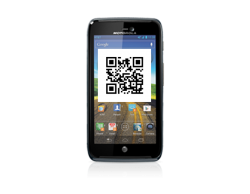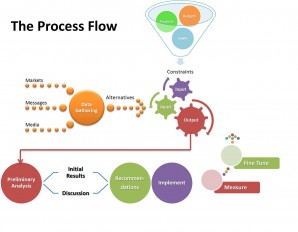Conquering Your Fears – Excerpt from Inspiration Now!
We need to work on conquering our fears. Dale Carnegie once said, “If you want to conquer your fears, don’t sit at home and think about them. Go out and get busy!” We’re talking again here about that bias for action I mentioned previously. It’s never too late to begin the process of becoming what you might become, or might have been if you had taken a different path, or might still become if you start on that path anew.
Let’s look at fears for a moment. Here’s a list of the most prevalent ones:
- Fear of flying
- Fear of public speaking
- Fear of heights
- Fear of the dark
- Fear of intimacy
- Fear of death
- Fear of failure
- Fear of rejection
- Fear of spiders
- Fear of commitment
My guess is that your list, if you are honest with yourself, will pretty well match, or at least include, most of the items on this list. I know mine does. Look where death comes in on the list – at number six! After five other fears that are completely non-lethal!
In my younger days, I loved flying. Never had an issue with it. Loved it. It was a great way to get to see new places and interact with new cultures. Plus in my younger days they had such things as non-stop flights, upgrade seats that actually existed. Plus food and drink during flights, free baggage handling (which was important to me when I had to carry three cartons full of seminar binders with me) and – critically important – a seat big enough so that your butt didn’t get numb in the first thirty minutes.
Fear of public speaking, on the other hand, was my number one. One of my mentors recognized that fear in me and was determined to eliminate it on the belief – correctly, it turns out – that if I was going to reach my full potential I had to become an accomplished professional public speaker. So he found a Call for Papers for a large upcoming trade conference called NEPCON – the National Electronic Packaging Convention – and helped me submit a proposal for a paper.
I did this only to make him happy, secure in the knowledge that my meager topic would never have a chance of garnering a spot in a very prestigious technical program. Ha! A month later I received an Authors Kit and a schedule for when the paper had to be print-ready and the slides had to be on hand for the presentation. Talk about panic!
I had help, though. There were writers at Xerox Data Systems where I worked and that department’s job was to help engineers like me put our ideas into words that others could understand. And there were some great graphics folks to make the slides I would use for the actual presentation (as this was pre-PowerPoint since the PC had yet to be invented.) My paper was entitled “Computer-Aided Troubleshooting on Automatic Module Testers.”
So I had slides and thought I was ready to go. Until my mentor told me that it was time to practice the presentation. All of a sudden this once purely technical project was taking on a very real life of its own. And in two weeks I was going to stand up in front of 300+ people to give my 20-minute talk.
We did the first run-throughs with small groups of people I knew. Then we did them with larger groups, including the design engineers who looked down on us manufacturing test engineers with disdain. But they weren’t the real public and I didn’t really put my heart and soul into the practice sessions. I was nervous. I stumbled. But I really didn’t think that it mattered much.
Presentation day duly arrived and I drove from Manhattan Beach (CA), where I lived, to the Anaheim Convention Center. After losing my breakfast between the house and the car, I finally got to my destination, grabbed my slides and headed for the rooms where the presentations were to be given. After throwing up again between the car and the building, I arrived to find that the conference program had an error in it. People were coming to hear me give a 20-minute talk entitled “Computer-Aided Troubleshooting on Atomic Module Testers.” Then they videotaped me and made me watch it and I almost died. There was no way I was going to look that bad in front of 300+ strangers. I’d rather die first. So I started to practice in earnest. And after several sessions with dozens of people I had stopped stumbling and was a far less nervous presenter. I was determined to do myself and my company proud.
So here I am on my maiden public speaking voyage with a whole lot of people waiting breathlessly for me, a 20-something in a short sleeved shirt and a narrow tie, to expound something atomic, not something automatic.
I learned then the value of humor in opening a presentation and in asking for audience participation in the form of answering a question right at the beginning of a talk. And I somehow got through my twenty minutes and even fielded a couple of questions before gratefully making my escape.
It turns out that there were several people from Corporate in the audience that day and the feedback they provided to my boss (mentor) was extraordinarily positive. They said that I had diffused the error in the program effectively and with humor, that I clearly know my material and that I had indeed been a credit to the organization.
But I don’t throw up anymore in parking lots on my way to giving them. What changed?I still get nervous before a talk. But not so as to be paralyzed by it. And I hope I never lose that little bit of nervousness that sets me up to do my best – every time.
This post is taken from Chapter 5 of my new book “Inspiration Now!” It is available athttps://www.createspace.com/5124589. Order your copy now.


 I had the book printed on very nice paper and the hard cover was a walnut veneer with gold printing. Very good looking and conveying very high quality. The book was titled “Design for Testability” and I priced it at $95. That’s $95 in 1978 dollars, which today would be roughly $347. For a 77-page book in 8-1/2” x 11” format.
I had the book printed on very nice paper and the hard cover was a walnut veneer with gold printing. Very good looking and conveying very high quality. The book was titled “Design for Testability” and I priced it at $95. That’s $95 in 1978 dollars, which today would be roughly $347. For a 77-page book in 8-1/2” x 11” format.

